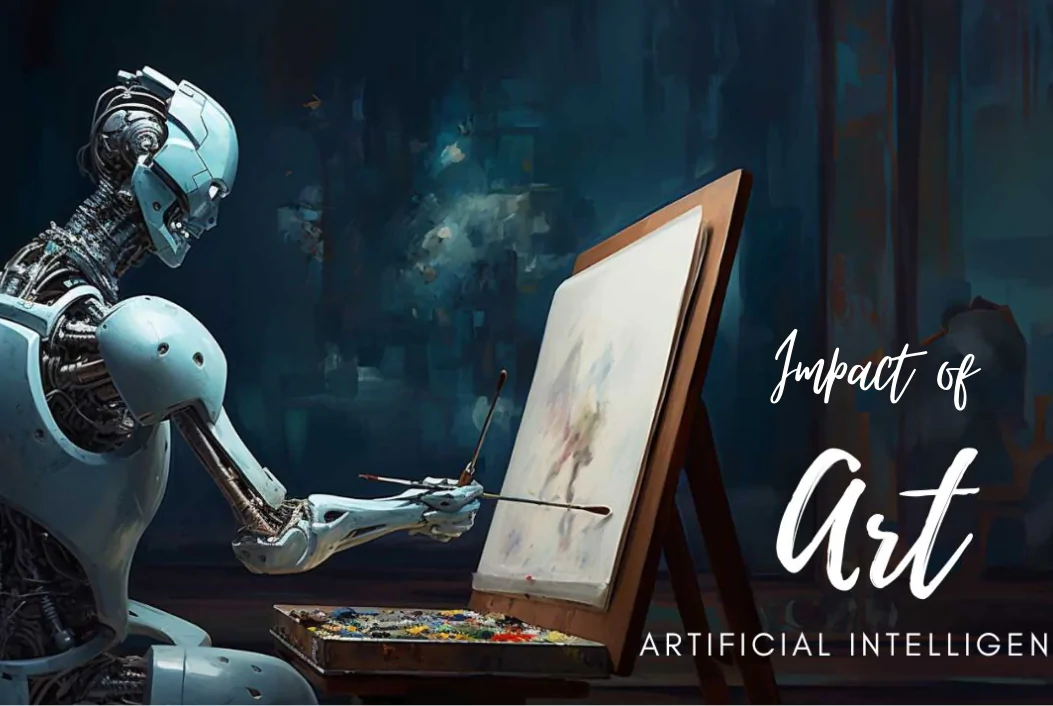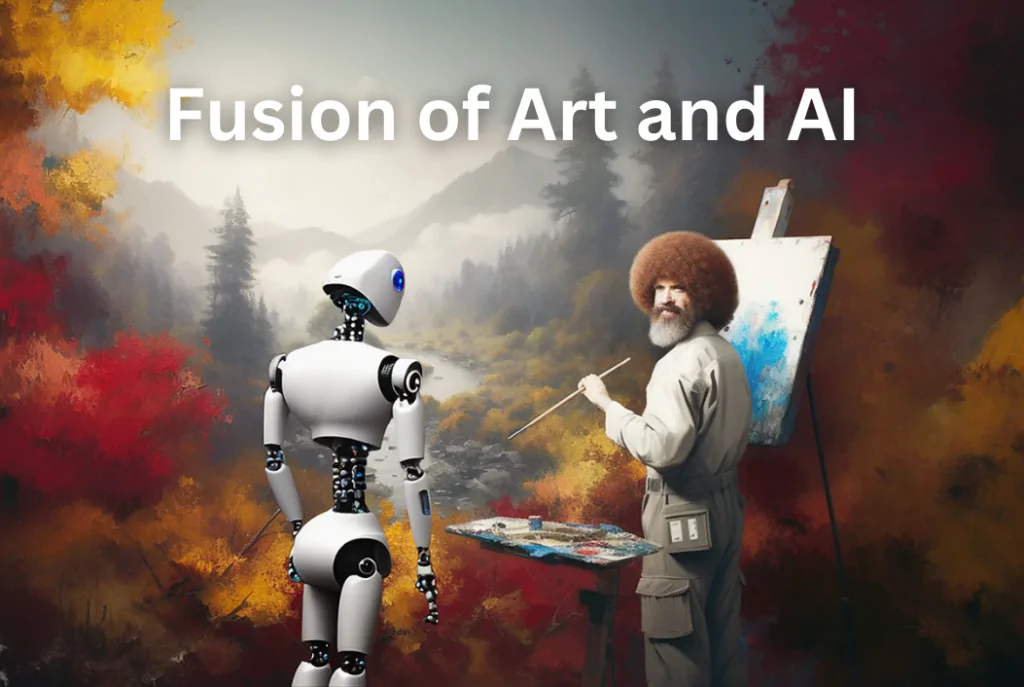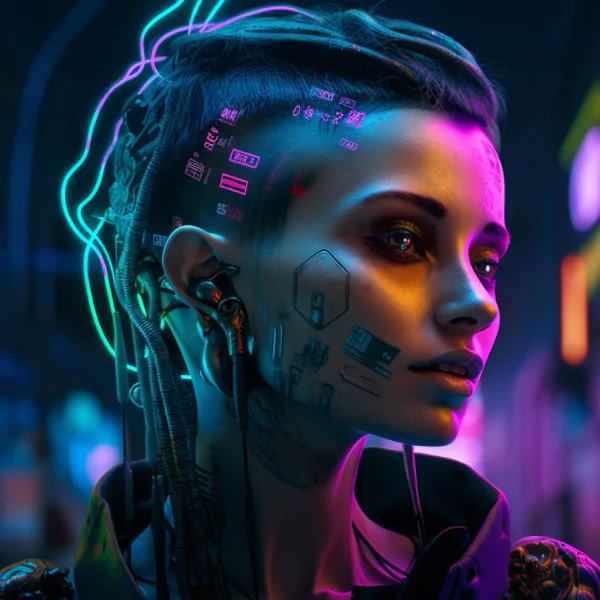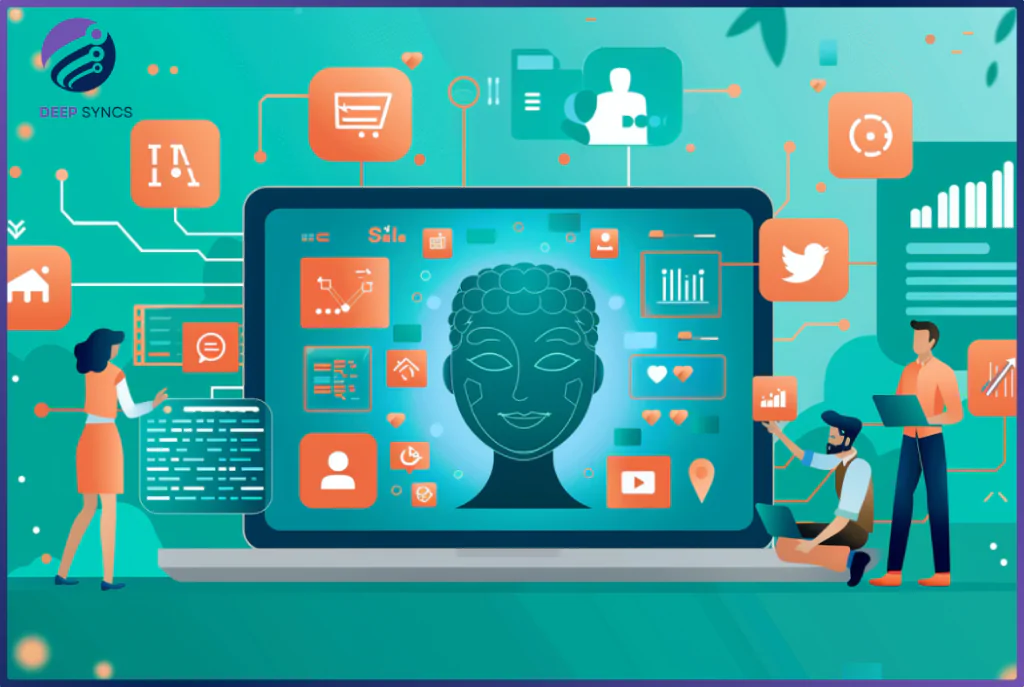Art and AI intersect in a dynamic realm where creativity meets innovation. AI, with its intricate algorithms and neural networks, is revolutionizing the artistic landscape, challenging traditional notions of creation. From generative adversarial networks to deep learning models, AI is reshaping how art is produced and perceived. Artists harness its power to explore new forms, textures, and expressions, pushing the boundaries of imagination. Yet, amidst this fusion of art and AI, questions of authorship and authenticity emerge, prompting reflection on the essence of creativity itself. As AI continues to evolve, its impact on the art world promises to be profound and multifaceted.
Introduction to Art and AI
A. Understanding Artificial Intelligence
Artificial Intelligence, or AI, has made significant strides in recent years, influencing various sectors, including the arts. At its core, AI involves the development of computer systems capable of performing tasks that typically require human intelligence. These can range from simple tasks like recognizing speech to more complex ones like making decisions.
B. The Evolution of Art in the Digital Age
The digital age has ushered in a new era for art, characterized by a shift from traditional mediums to digital platforms. This transformation has not only changed how art is created and distributed but also how it is consumed. Digital tools and technologies have expanded the horizon for artists, enabling them to explore new forms of creativity.
C. Exploring the Intersection of Art and AI
The fusion of art and technology is not a new phenomenon, but the introduction of AI into this mix is a relatively recent development. This intersection presents unparalleled opportunities and challenges, sparking discussions on the very nature of creativity and artistic expression.
The Role of AI in Art Creation

A. AI-Generated Artworks: A New Form of Creativity
One of the most intriguing aspects of AI in art is the emergence of AI-generated artworks. These are pieces created with the aid of AI algorithms, which can analyze thousands of images and learn styles and techniques, ultimately generating new, unique pieces. This new form of creativity challenges our traditional notions of art and the role of the artist.
B. Understanding Machine Learning in Art
At the heart of AI-generated art is machine learning, a subset of AI that enables systems to learn from data and improve over time. In the context of art, machine learning algorithms can learn from a vast array of artistic styles and elements, creating artworks that are a blend of various influences and techniques.
C. Enhancing the Creative Process with AI Tools
AI tools offer artists new ways to enhance their creative process. From providing suggestions on color palettes to generating complex patterns and textures, AI can assist artists in exploring new possibilities and pushing the boundaries of their creativity.
Tools for AI Art Creation
In the realm of AI-assisted art creation, several innovative tools have emerged, offering artists and enthusiasts a plethora of creative possibilities.
-
DeepDream: Developed by Google, DeepDream utilizes neural networks to generate visually captivating and surreal imagery. Its algorithms transform ordinary images into mesmerizing, dream-like compositions, showcasing the transformative potential of AI in artistic expression.
-
Runway ML: Runway ML provides a user-friendly platform for exploring AI-driven creativity. Artists can leverage its intuitive interface to experiment with various AI models, enabling them to seamlessly integrate AI techniques into their artistic workflows. Learn more about Runway ML.
-
Artbreeder: Artbreeder facilitates collaborative art creation by blending and evolving images using genetic algorithms. Artists can explore a vast array of possibilities by manipulating parameters and guiding the AI-driven evolution of their creations. Know more about Artbreeder.
-
DALL-E: Created by OpenAI, DALL-E specializes in generating imaginative images from textual prompts. This groundbreaking tool demonstrates the potential of AI in visual storytelling, allowing users to effortlessly translate their ideas into compelling visual narratives.
-
GANPaint Studio: GANPaint Studio empowers users to interactively edit and manipulate images using Generative Adversarial Networks (GANs). This tool offers a glimpse into the future of AI-assisted art creation, enabling artists to seamlessly blend human creativity with AI capabilities.
The Impact of AI on Art Appreciation

A. AI in Art Curation and Exhibition
Artificial intelligence is also transforming how art is curated and exhibited. AI algorithms can analyze visitor data and preferences, curating personalized exhibitions that cater to individual tastes, thereby creating more engaging and interactive experiences for art enthusiasts.
B. Personalized Art Recommendations with AI Algorithms
Just as streaming services recommend movies and music based on user preferences, AI algorithms can suggest artworks that viewers might enjoy. This not only enhances the art appreciation experience but also helps artists reach a wider audience.
C. Redefining our Perception of Artistic Beauty with AI
AI challenges our traditional perceptions of artistic beauty by introducing new forms of art that are a departure from human-created works. This prompts us to reconsider what we regard as beautiful and why, expanding our appreciation for diverse forms of expression.
Ethical and Social Implications of Art and AI
A. Addressing Bias in AI Art Creation
A pressing concern is the potential for bias in AI-generated art. Since AI algorithms learn from existing datasets, they can inadvertently perpetuate the biases present in those data. It’s crucial to address and mitigate these biases to ensure a diverse and inclusive approach to AI art creation.
B. Copyright and Ownership Rights in AI-Generated Art
The emergence of AI-generated art raises complex questions about copyright and ownership. Who owns an AI-created piece—the artist who designed the algorithm, the owner of the data it was trained on, or the AI itself? These are questions that the art world and legal systems are still grappling with.
C. The Role of Artists in the Age of Artificial Intelligence
As AI becomes more prevalent in the art world, the role of artists is evolving. Artists are increasingly becoming collaborators, working alongside AI to explore new creative territories. This shift challenges artists to rethink their approaches and embrace new technologies.
Future Trends in Art and AI
A. Augmented Reality and AI Art Installations
Looking ahead, we can anticipate the rise of augmented reality (AR) and AI art installations, which blend physical art spaces with digital elements. These installations promise to offer immersive experiences that challenge our understanding of space and narrative in art.
B. Collaborations between Artists and AI Systems
Future collaborations between artists and AI systems will likely become more nuanced and complex, with artists leveraging AI not just as a tool, but as a partner in the creative process. These collaborations have the potential to produce groundbreaking works that push the envelope of creativity.
C. The Future of Creativity in a World Dominated by AI
As AI continues to evolve, so too will its role in the creative landscape. The future of creativity in an AI-dominated world is poised to be a blend of human intuition and machine efficiency, resulting in a rich tapestry of artistic expression that transcends traditional boundaries.
Summary
The intersection of art and AI is a dynamic and evolving space, brimming with opportunities and challenges. While AI-generated artworks and personalized art experiences are reshaping the creative landscape, the ethical and social implications of these technologies must be carefully considered. The future of art and AI promises a world where creativity knows no bounds, but it is crucial we navigate this future with mindfulness and respect for the human element in art.
FAQs
1. Can AI truly be creative in art-making?
AI can mimic creative processes and generate artworks that push the boundaries of traditional art. However, the debate over AI’s ability to possess creativity akin to human creativity continues.
2. How can artists benefit from AI technologies?
Artists can leverage AI technologies to expand their creative repertoire, reach wider audiences, and explore new forms of expression that were previously unimaginable.
3. What are the ethical concerns surrounding AI in art?
The ethical concerns include bias in AI algorithms, copyright and ownership issues involving AI-generated art, and the potential displacement of human artists in favor of AI technologies. Addressing these concerns is crucial to fostering a fair and inclusive art world that celebrates both human and machine creativity.



Wow, fantastic blog layout! How long have you been running a blog for?
you make running a blog glance easy. The total look of your site is wonderful, as neatly
as the content! You can see similar here sklep internetowy
Wow, incredible blog layout! How long have you been running a blog for?
you make blogging glance easy. The entire look of your site is excellent, as well as the content!
You can see similar here dobry sklep
Wow, awesome blog structure! How lengthy have you ever been running a blog for?
you made running a blog glance easy. The full glance of your web site is
fantastic, let alone the content material! You can see similar here ecommerce